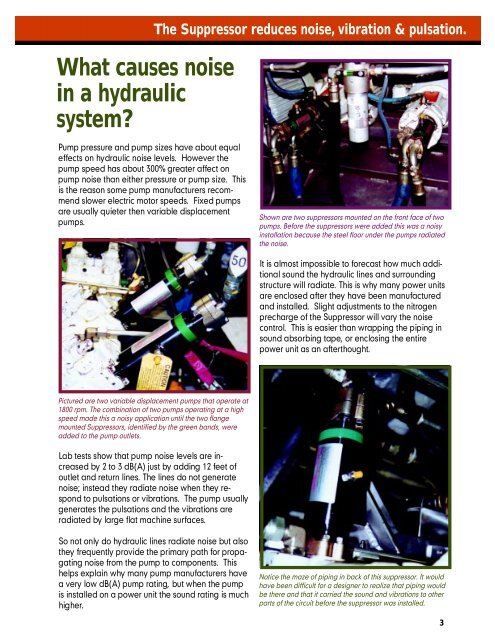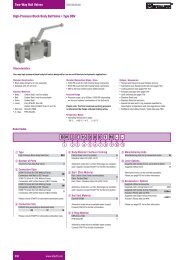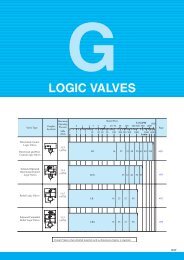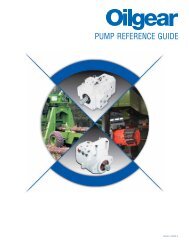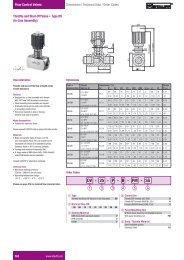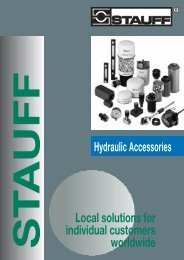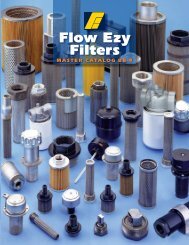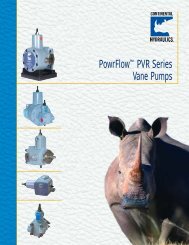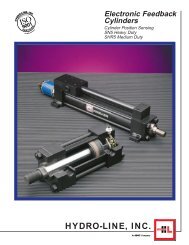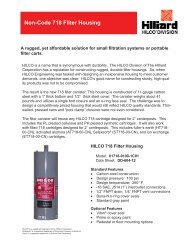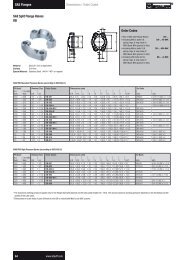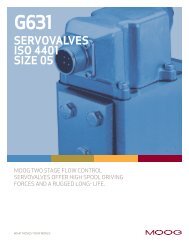hydraulic suppressors - Royal Hydraulics
hydraulic suppressors - Royal Hydraulics
hydraulic suppressors - Royal Hydraulics
You also want an ePaper? Increase the reach of your titles
YUMPU automatically turns print PDFs into web optimized ePapers that Google loves.
What causes noise<br />
in a <strong>hydraulic</strong><br />
system<br />
The Suppressor reduces noise, vibration & pulsation.<br />
Pump pressure and pump sizes have about equal<br />
effects on <strong>hydraulic</strong> noise levels. However the<br />
pump speed has about 300% greater affect on<br />
pump noise than either pressure or pump size. This<br />
is the reason some pump manufacturers recommend<br />
slower electric motor speeds. Fixed pumps<br />
are usually quieter then variable displacement<br />
pumps.<br />
Shown are two <strong>suppressors</strong> mounted on the front face of two<br />
pumps. Before the <strong>suppressors</strong> were added this was a noisy<br />
installation because the steel floor under the pumps radiated<br />
the noise.<br />
It is almost impossible to forecast how much additional<br />
sound the <strong>hydraulic</strong> lines and surrounding<br />
structure will radiate. This is why many power units<br />
are enclosed after they have been manufactured<br />
and installed. Slight adjustments to the nitrogen<br />
precharge of the Suppressor will vary the noise<br />
control. This is easier than wrapping the piping in<br />
sound absorbing tape, or enclosing the entire<br />
power unit as an afterthought.<br />
Pictured are two variable displacement pumps that operate at<br />
1800 rpm. The combination of two pumps operating at a high<br />
speed made this a noisy application until the two flange<br />
mounted Suppressors, identified by the green bands, were<br />
added to the pump outlets.<br />
Lab tests show that pump noise levels are increased<br />
by 2 to 3 dB(A) just by adding 12 feet of<br />
outlet and return lines. The lines do not generate<br />
noise; instead they radiate noise when they respond<br />
to pulsations or vibrations. The pump usually<br />
generates the pulsations and the vibrations are<br />
radiated by large flat machine surfaces.<br />
So not only do <strong>hydraulic</strong> lines radiate noise but also<br />
they frequently provide the primary path for propagating<br />
noise from the pump to components. This<br />
helps explain why many pump manufacturers have<br />
a very low dB(A) pump rating, but when the pump<br />
is installed on a power unit the sound rating is much<br />
higher.<br />
Notice the maze of piping in back of this suppressor. It would<br />
have been difficult for a designer to realize that piping would<br />
be there and that it carried the sound and vibrations to other<br />
parts of the circuit before the suppressor was installed.<br />
3


